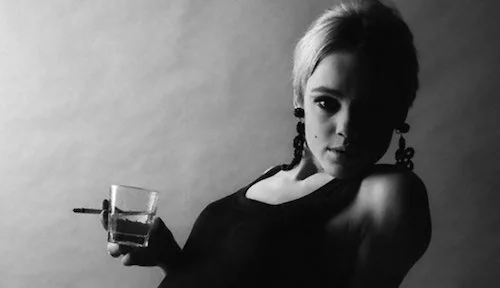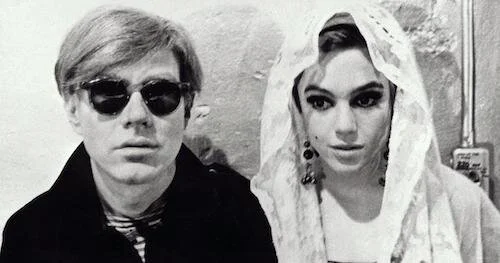Remembering Edie Sedgwick
Forty nine years ago, Edith Minturn Sedgwick Post — known to the world simply as Edie Sedgwick — passed away at the young age of twenty eight. Known for her work with Andy Warhol’s Factory, as well as being arguably his biggest muse ever, I want to use this opportunity to bring up why Sedgwick was well beyond her years, and I’d argue that she was misunderstood as transgressive, being attached to the counterculture art of the 1960’s more than the dreams she had. Her legacy is seemingly marred by infamy via misinterpretation, including that God awful biopic Factory Girl (which resorted her life to a trashy tabloid summarization). It’s true that she was a part of a family rich with fortune, but the truth is she lived an exceptionally difficult life, through and through. She was mistreated in her youth for having an uncontrollable eating disorder, especially by her abusive father. I read her escape to New York City as a means of starting new: escaping the many nightmares she endured, and her struggles with trauma and anorexia. The city that was currently attached to the new ways of art was able to provide her with a new path: a much needed path.
Sedgwick was honed in on, often as the focal point of fascination (from Warhol’s films, to local tributes like “Femme Fatale” by The Velvet Underground) or as a research subject. Who was this girl, and where did she come from? I feel like the changing ways of film, fashion, and all forms of entertainment left industries wanting to find the next big celebrity, cementing Sedgwick as a socialite of sorts. Even though she was a part of movements as an “it girl”, I honestly feel like she was looked at rather than listened to. It was as if she was seen as the inspiration for others, rather than allowed to develop into her own artist or voice. When it comes to the woes of celebrity life and the identities it creates, Sedgwick is an example that always comes to mind. Here is someone who needed help, love, warmth and to be heard. Instead, I feel like she was made to be the next major headline.
Andy Warhol and Edie Sedgwick.
In the art that we did get from her, there was a major amount of vulnerability that did go against the promoted mainstream films and images of the time. In her numerous Warhol films (including her debut Vinyl, where Warhol insisted that she take part), she wasn’t acting as much as she was documented in his many experiments. Poor Little Rich Girl was the framing of her life: a descendant of the elite now struggling. While enticing for others to watch, it was as if her then-current predicaments were turned into entertainment fodder, with no solution (outside of her becoming a star) in sight. Then there is Chelsea Girls (with her part removed, as per her request after her and Warhol had a falling out, only to become a standalone film Afternoon) and Four Stars **** (which is twenty five hours long, and I can’t profess to having seen it), where she (and other members of the Factory and Warhol circles) were followed for long periods of time, either living life or partaking in loosely conceived scene ideas. No matter what, we were watching Edie Sedgwick herself; as if Marilyn Monroe was virtually just Norma Jeane Mortenson in every single film.
Even in the biggest departure of her Warhol years, titled Ciao! Manhattan, the story was based on her and she basically was acting as herself once more. This time, it was under the care of filmmakers David Weisman and John Palmer, and it was a version of herself she felt best represented her life and suffering. During production, she got sick again, and was hospitalized for addiction. She returned back to her birthplace in California. She found love with another patient (Michael Post). She continued to film Ciao! Manhattan when the timing felt right. Later that year, November 1971, she passed away, after Post supplied her the prescribed pain relief medication she was to take routinely, which clashed with the alcohol she had at a fashion party earlier that day. Her story told her way, Ciao! Manhattan, would be released in theatres shortly afterwards.
Help was finally coming to Sedgwick, even during her battles with addiction and deteriorating health, but it was too late. The celebrated star of Warhol’s underground cinema, and the fashion icon that was associated with the art movements of the ‘60s, was an aspiring artist wanting to find a new life. Her story is something that I have held dear to me ever since I was a teenager and first discovered her, because I just couldn’t believe how often she sought solace in others, only for these people to love the current state of her and not her as a living, breathing person. The Sedgwick children were all troubled. Older brother Francis commit suicide in 1964, while Edie’s other brother Robert died in a vehicular accident just over a year later. All of the children were struggling with mental health issues, and none were helped effectively; they were tossed into hospitals, during a time when mental health was still being mistreated by the system, and punished for their illnesses.
Coming to New York was Edie’s way of getting away from these same fates. Instead of being shunned, she was highlighted. I feel like this story could have gone another way in a different time period, but she was treated as art and a symbol and not as a fellow person. Edie Sedgwick was fascinating, yes, but she herself was fascinating and worthy of a better life. She was a friend to many, including members of the Factory troupe, local fashion industry members, and Bob Dylan himself. She was much more than the image attached to her, and there were people that saw the light in her. I don’t really know how to best portray that, but I hope I have done Edie Sedgwick’s legacy a positive service, by sharing that light with you.
Andreas Babiolakis has a Masters degree in Film and Photography Preservation and Collections Management from Ryerson University, as well as a Bachelors degree in Cinema Studies from York University. His favourite times of year are the Criterion Collection flash sales and the annual Toronto International Film Festival.




